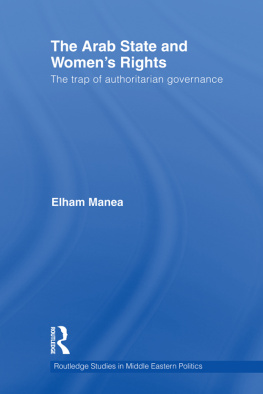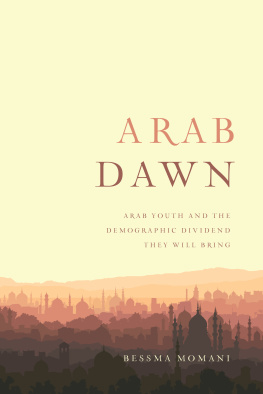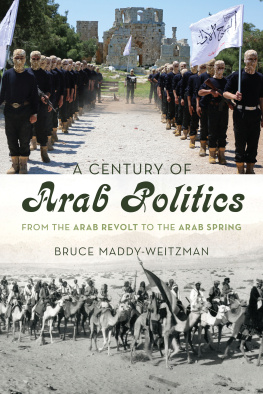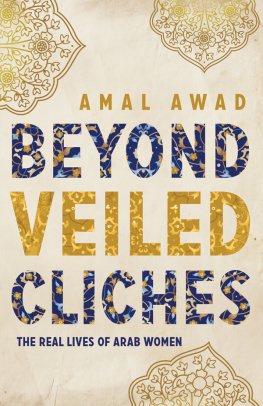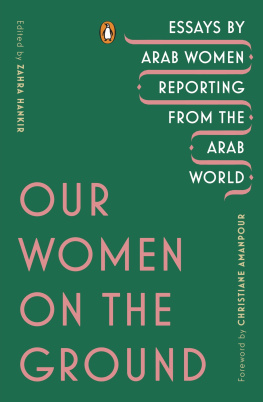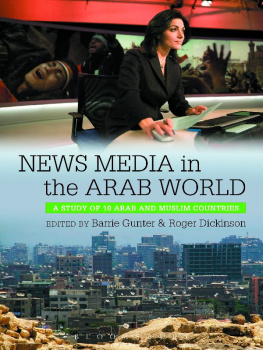First published in 2012 by
Bloomsbury Qatar Foundation Publishing
Qatar FoundationVilla 3, Education City
PO Box 5825 Doha, Qatar
www.bqfp.com.qa
Copyright Amal Al-Malki and David Kaufer, 2012
The moral right of the authors has been asserted
ISBN 9789992194324
Cover design by Jamie Winder
Sponsorship for this research was generously granted by the Qatar National Research Priority Fund to lead investigator Dr Amal Mohammed Al-Malki. The views expressed herein are the authors alone. Any errors or omissions are the sole responsibility of the authors.
All rights reserved
You may not copy, distribute, transmit, reproduce or otherwise make available this publication (or any part of it) in any form, or by any means (including without limitation electronic, digital, optical, mechanical, photocopying, printing, recording or otherwise), without the prior written permission of the publisher. Any person who does any unauthorised act in relation to this publication may be liable to criminal prosecution and civil claims for damages.
Visit www.bloomsbury.com to find out more about our authors and their books.
You will find extracts, author interviews, author events and you can sign up for newsletters to be the first to hear about our latest releases and special offers
This book is dedicated to
Her Highness Sheikha Moza Bint Nasser:
A visionary for women worldwide
Contents
This book reports the first comprehensive survey of Arab women in Arab news a picture of peaks, valleys, and troughs where the achievements, challenges, and day-to-day realities of Arab women are portrayed. The vast majority of media studies on Arab women thus far undertaken are Western-based. They study the effect of Western stereotypes in Western media depictions of Arab women. A sprawling literature traces Western stereotypes of Arab women from medieval times to the present. From 1800, the dominant Western stereotype of Arab women depicts them as passive and oppressed. Thirty years of social science media research in the West has shown that media images of Arab women reinforce this 200-year-old stereotype. Much of this research has studied silent image bites of Arab women, in which women are pictured in veils and their own voices are replaced by Western captions or voice-overs.
Today, the Internet and satellite communications allow the world to share around-the-clock news, and global news services permit one part of the world to read the news produced in other parts of the world. These recent developments make it possible to broach two never-before-asked research questions:
- If we could draw a statistically representative sample of Arab women in Arab news, would the sample reinforce or disconfirm Western stereotypes of Arab women as passive?
- If we could take a census of Arab women in our representative sample, and if we could come to know them as human beings, and benchmark their experiences against the experiences of women worldwide, what would our census reveal?
44% were concentrated in just four liberal pan-Arab sources based in London.
The journalism in much of our sample is thus driven by a liberal vision largely unknown to or ignored by the West. Almost a decade after 9/11, one of Americas two most venerable and most widely read news weeklies, Newsweek (), considered that its American readership still needed to be made aware of the existence of a liberal Arab press and progressive Arab thought-leaders who advocate the rights of women.
After creating a concentrated sample of Arab females in Arab news, we constructed and validated a coding scheme to measure active vs. passive behavior in news. Our coding study found that Arab women in Arab news display a wider range of active behaviors than previous studies had found for Arab women in Western media. This finding struck us as being, on the face of it, good news for media representations of Arab women in the Arab press. But coding study counted the mentions of Arab women in news, but kept their names, identities, and biographical details anonymized in sterile numbers. Furthermore, our coding study left historical and cultural issues underpinning the surface of the news stories unexamined.
Part II, entitled Canvassing Arab Females in Arab News, describes our pursuit of question two. We returned to our corpus but we now removed the narrow lens of our coding study to take a more comprehensive and in-depth look at the Arab females in Arab news. We sought richer interpretive readings of the news summaries coded in as individuals living in distinct countries with distinct biographies. We meet Arab women who are sometimes outstripping men, sometimes keeping pace, and sometimes falling behind. We meet Arab women of achievement who hold titles and set trends. We meet Arab women who are victims of economic blight, ravaged by war, poverty, ineffective leaders, and brutal politics. We meet women who are empowered and women who are detained or imprisoned, and forced to endure everyday insults and indignities within practices of sexism or misogyny. However, unlike the Western stereotype, Arab women in Arab news are not stigmatized as helpless creatures incapable of fending for themselves. Rather, as we have seen, the appearance of Arab women in hard news is concentrated in the liberal media that are transnational. This concentration means that, when an Arab media source mentions Arab women in hard news, the odds are that the source takes a pro-women editorial stance, takes an interest in reporting on Arab women as a way of spotlighting their imagination, ingenuity, suffering, or marginalization, seeks to expose shortcomings in the Arab societies that leave women at the periphery, and operates at a safe distance from the countries it reports on.
The analysis in , we show that the concepts of active and passive, stripped of their Western biases, are not dichotomous but overlapping categories. Arab women, like women worldwide, are constantly monitoring the passive constraints of their cultures to learn about and test boundaries and to step across them when possible and appropriate. Arab women, like women worldwide, have learned to see passivity less as an insurmountable barrier than as a reality check and a measure against which to mark their own advancement. This book shows that Arab women in Arab news can be identified with significant achievements in the struggle for equality and significant challenges ahead.
From coding to canvassing Arab women in Arab news: the journey of this book
The poet, critic and documentary writer Vicki Karp once shared perceptive words about writing and its difference from reading: When we read, we start at the beginning and continue until we reach the end. When we write, we start in the middle and fight our way out (cited in ). This process describes the genesis of this book. We started writing one book and then found ourselves in the middle of writing another. The trick was to fight our way out of the middle of the second book so that it could flow seamlessly from the book we had begun.
The first book, the book we originally planned, was a media study of Arab women in Arab news. The premise of that study relied on the following historical narrative. From the 1980s, there has been a spate of empirical media studies showing that Arab women (and Arabs generally) are represented in Western media in a negative light. These empirical studies confirmed anti-Arab stereotypes that scholars have documented for hundreds of years in the West. The identification of Arab women as passive in the Western imagination has an estimated birth around the turn of the nineteenth century, with the confluence of colonialism and romanticism. Western stereotypes of Arab women evolved from pre-colonial images of shrewish harassing women (; Kahf 1999; Greenberg & Gottchalk 2008). Kahf (1999) calls this transition in the Western imagination toward Arab women a shift from termagants (old scolds) to odalisques (nubile harem women).



